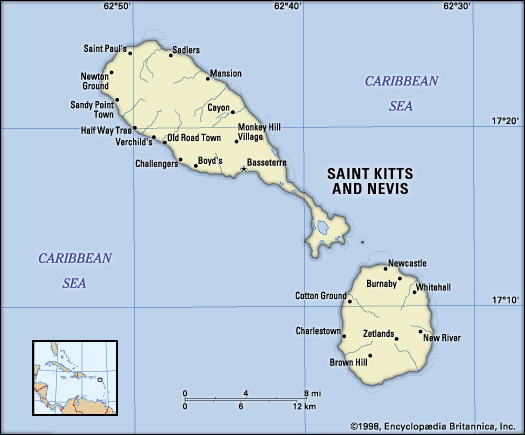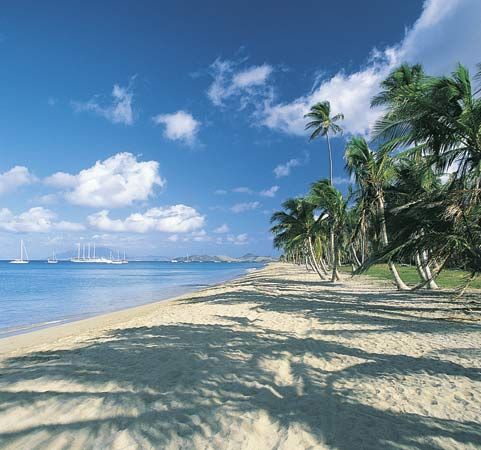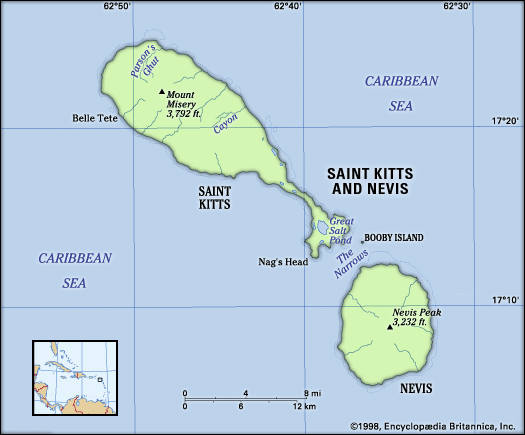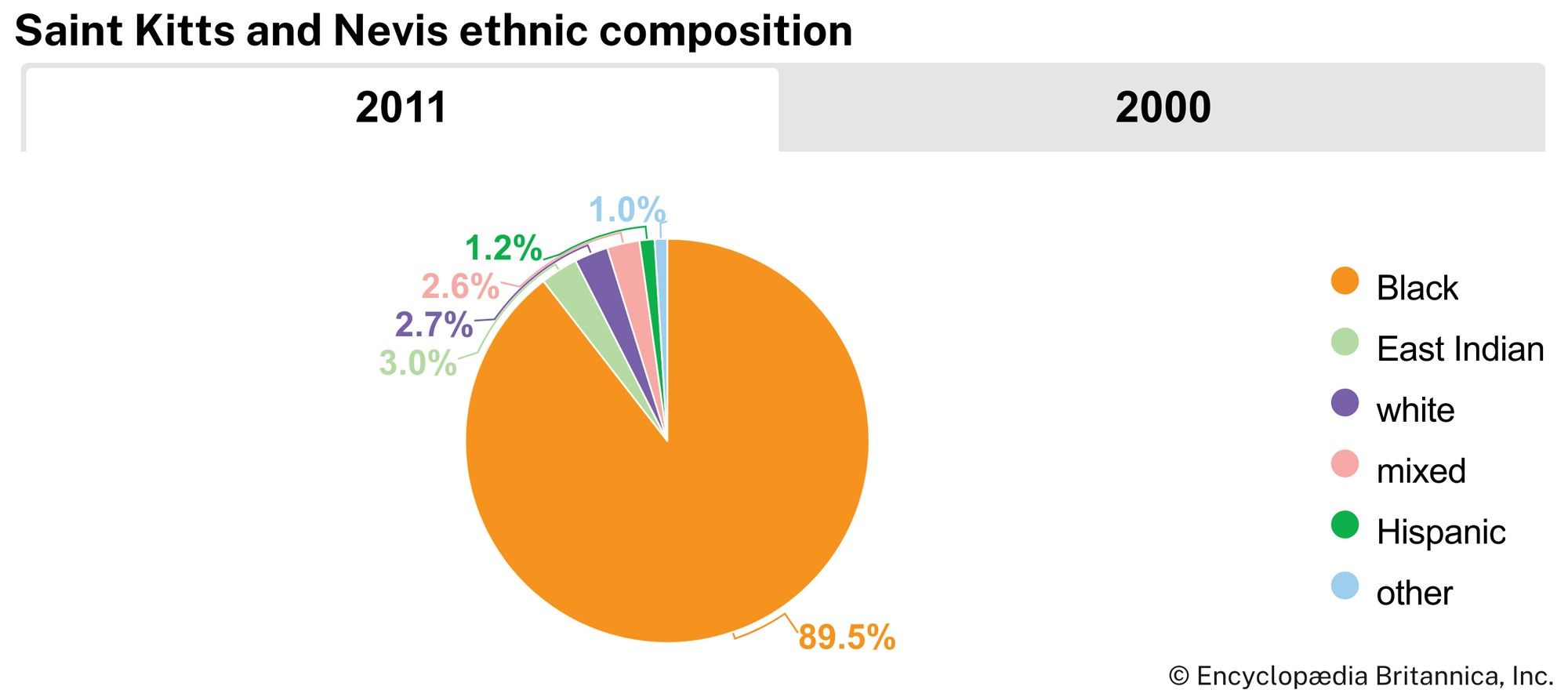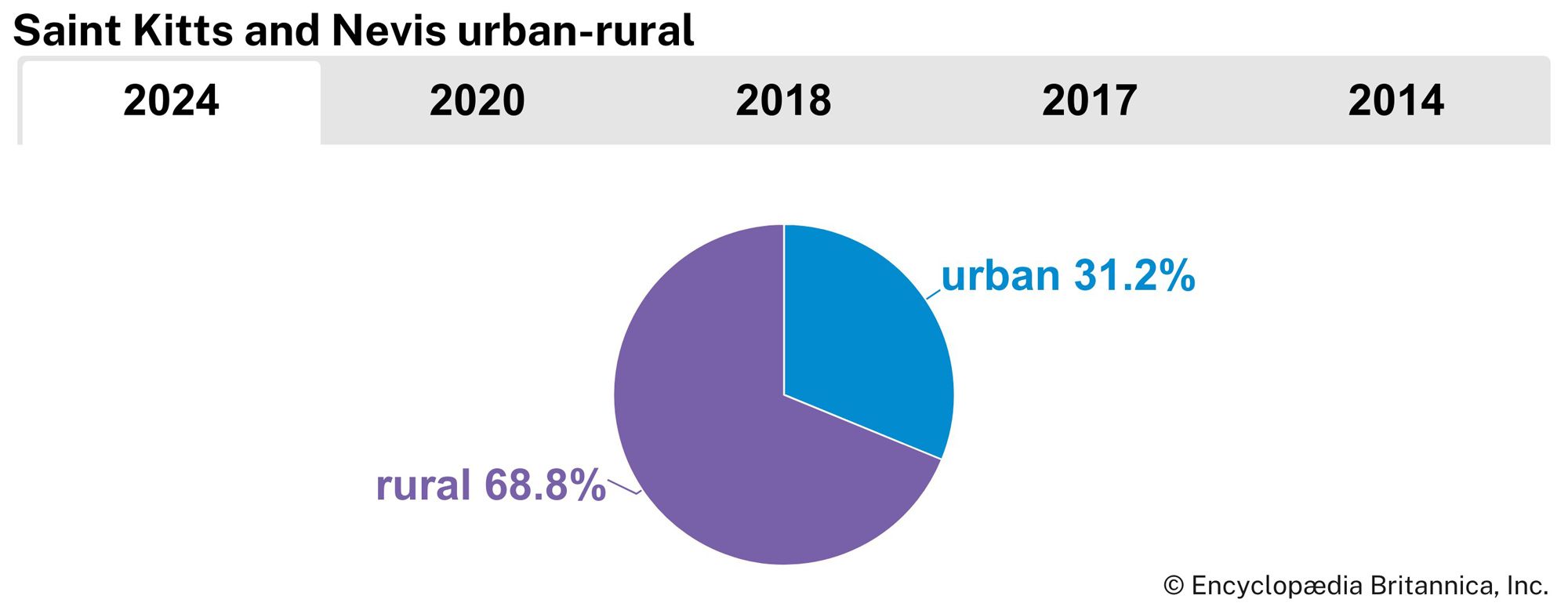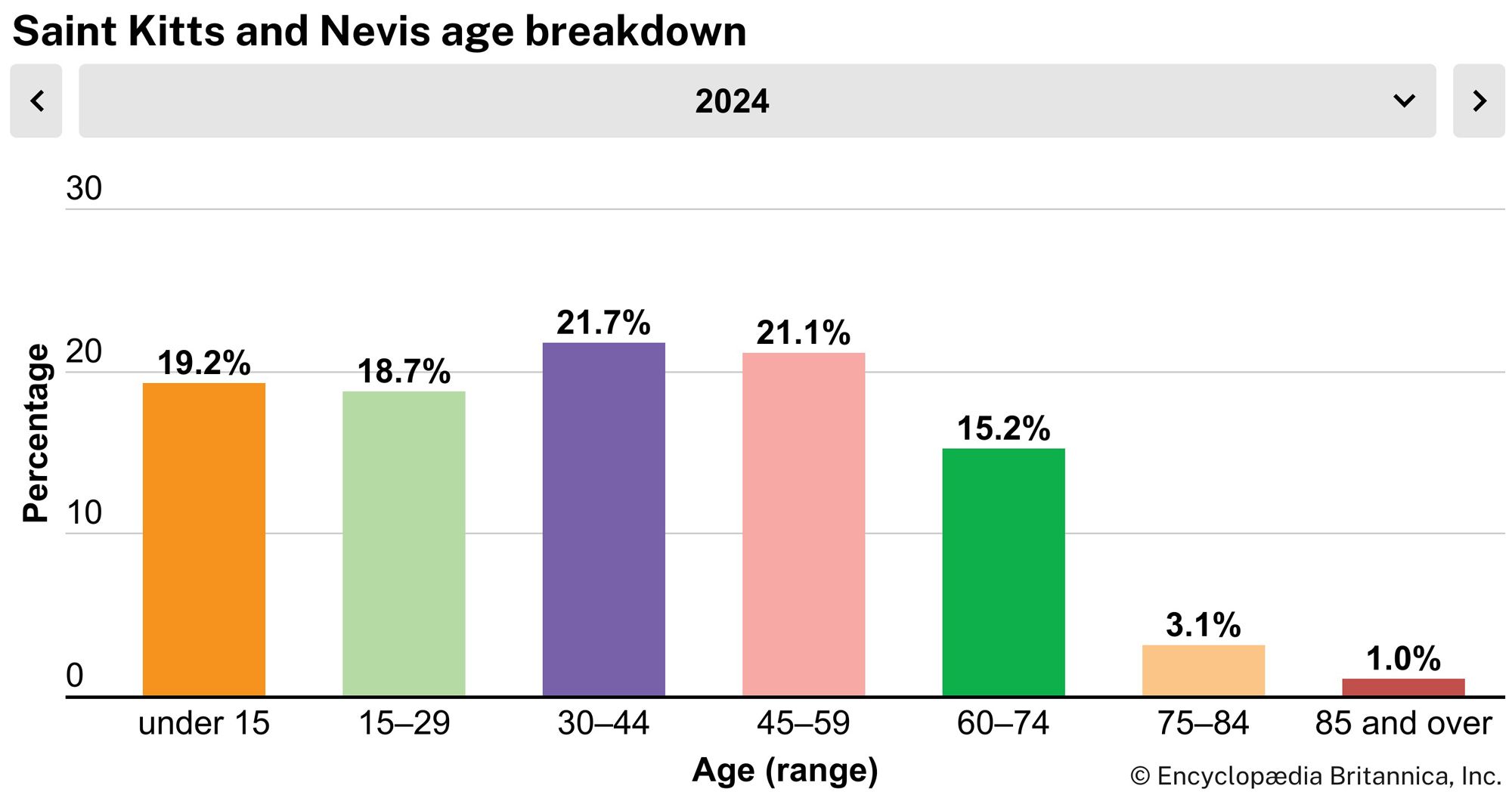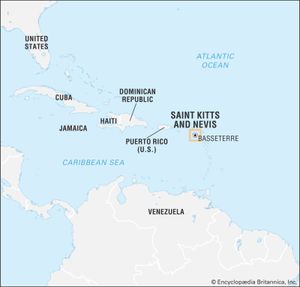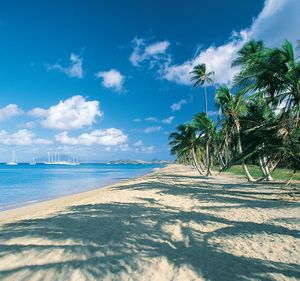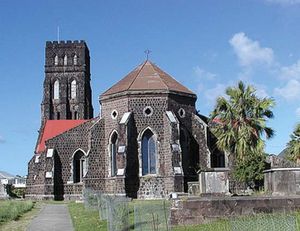Saint Kitts and Nevis
Saint Kitts and Nevis, state composed of two islands of the Lesser Antilles in the eastern Caribbean Sea. Their combined area is 104 square miles (269 square km). The capital is Basseterre on the island of Saint Kitts.
Land
Saint Kitts is 23 miles (37 km) long and 5 miles (8 km) wide, is oval in shape, and has an area of 68 square miles (176 square km). A volcanic mountainous ridge down the centre forms a semicircle around a plain in the southeast. Mount Liamuiga (formerly Mount Misery), with a lake in its forested crater, is the highest point (3,792 feet [1,156 metres]). The soil—except in the mountains—is light and porous. Most of the beaches are of black volcanic sands. The island is well watered and fertile, with warm summers and somewhat cooler winters. The average summer temperature is about 86 °F (30 °C) and the average winter temperature about 81 °F (27 °C). The annual precipitation averages 55 inches (1,397 mm), and the rainy season is from May to November.
- Also Known As:
- Saint Christopher and Nevis
- Federation of Saint Kitts and Nevis
- Head Of Government:
- Prime Minister: Terrance Drew
- Capital:
- Basseterre
- Population:
- (2024 est.) 48,400
- Head Of State:
- British Monarch: King Charles III, represented by Governor-General: Marcella Liburd
- Form Of Government:
- federated constitutional monarchy with one legislative house (National Assembly [152])
- Official Language:
- English
- Official Religion:
- none
- Official Name:
- Federation of Saint Kitts and Nevis1
- Total Area (Sq Km):
- 263
- Total Area (Sq Mi):
- 102
- Monetary Unit:
- Eastern Caribbean dollar (EC$)
- Population Rank:
- (2023) 212
- Population Projection 2030:
- 52,200
- Density: Persons Per Sq Mi:
- (2024) 474.5
- Density: Persons Per Sq Km:
- (2024) 184
- Urban-Rural Population:
- Urban: (2024) 31.2%
- Rural: (2024) 68.8%
- Life Expectancy At Birth:
- Male: (2022) 74.6 years
- Female: (2022) 79.6 years
- Literacy: Percentage Of Population Age 15 And Over Literate:
- Male: not available
- Female: not available
- Gni (U.S.$ ’000,000):
- (2023) 1,021
- Gni Per Capita (U.S.$):
- (2023) 21,380
- Officially:
- Federation of Saint Kitts and Nevis
- Also called:
- Saint Christopher and Nevis
- The Federation of Saint Christopher and Nevis is the alternate official long-form name.
- Includes three appointed seats and one ex officio seat for the attorney general (if not elected); in addition, a speaker may be appointed from outside the National Assembly.
Nevis, surrounded by coral reefs, lies 2 miles (3 km) southeast of Saint Kitts across a channel known as The Narrows. The island is circular, and it consists almost entirely of a mountain, Nevis Peak (3,232 feet [985 metres]), which is flanked by the lower Round Hill (1,014 feet [309 metres]) on the north and by Saddle Hill (1,850 feet [564 metres]) on the south. Its area is 36 square miles (93 square km). The soil of Nevis is clay studded with volcanic boulders. The climate is similar to that of Saint Kitts. Both Nevis and Saint Kitts lie in a tropical hurricane (tropical cyclone) belt; hurricane season is between August and October.
People
The population is largely black, with a small mulatto (of mixed African and white heritage) minority. There are also very small South Asian and white groups. More than two-thirds of the population lives in rural areas. The official language is English. The main religious denominations are Anglican and Methodist, with a smaller number of Roman Catholics. Both Saint Kitts and Nevis have traditionally had high levels of emigration, offsetting natural increases and enabling the islands to maintain a fairly stable population. About two-thirds of the population is between the ages of 15 and 59.
Economy
The cultivation of sugarcane—once a nationalized industry and the mainstay of the Saint Kitts and Nevis economy—ceased in 2005 following a decline in overseas markets. It was replaced by tourism as the most-important economic sector. Crops now cultivated include vegetables and fruits, chiefly coconuts.

The Eastern Caribbean Central Bank serves as the country’s monetary authority, and the Eastern Caribbean dollar is the official currency. Light industries in Saint Kitts and Nevis produce items mainly for export from imported materials. Products include electronic equipment, batik-dyed fabrics, and other clothing and furniture. Remittances from emigrants form an important source of foreign exchange. The United States, the United Kingdom, and Trinidad and Tobago are the principal trading partners. There is a deepwater port at Basseterre, and each island has an international airport; Robert L. Bradshaw International Airport, is on Saint Kitts, and Vance Amory International Airport, is on Nevis.
Government and society
Since independence in 1983, the Federation of Saint Kitts and Nevis has been an independent member of the Commonwealth, with the British monarch as its head of state. An appointed governor-general represents the crown. The prime minister, who together with other ministers is a member of the cabinet, is the head of government. The monarch and the National Assembly constitute the parliament, some of whose members are appointed. The island of Nevis enjoys a certain amount of autonomy within the federal structure; it has its own premier and legislature, and the constitution provides for it to secede from the federation if certain procedures are followed. There is universal adult suffrage.
Education is compulsory for all children from the age of 5 to 16, provided by a countrywide system of free public schools as well as private church-affiliated schools. There are several hospitals and many health centres throughout the islands. Tropical diseases have been virtually eliminated. Most of the state’s cultural activity is concentrated in the capital, Basseterre.


